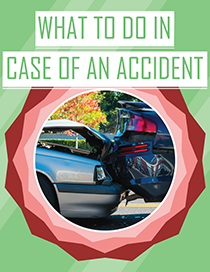4 Common Questions About Tire Pressure Monitoring Systems
A Tire Pressure Monitoring System (TPMS) is a system of integrated tire stem sensors that detect and warn a driver that tire pressure has dropped to a potentially unsafe level. The TPMS symbol looks like an exclamation point in parentheses. It is designed to illuminate when the pressure in one or more of your tires is reduced by around 25%
In this post, we will look at the common questions drivers have about tire pressure monitoring systems (TPMS).
When did vehicles start having TPMS?
TPMS systems became mandatory for new vehicles in the early 2000’s, however, European and American luxury cars had adopted the technology even earlier. In 2012, the National Highway Traffic Safety Administration conducted a study to evaluate the effectiveness of TPMS in Proper Tire Pressure Maintenance. The study showed that 23.1% of the vehicles without a TPMS had at least one severely underinflated tire, while only 11.8% of TPMS-equipped vehicles had an underinflated tire. Based on the study findings, the NHTSA estimates that in 2011 mandating TPMS saved $511 million in reduced fuel consumption resulting from properly inflated tires.
When does the TPMS light come on?
The TPMS light is part of the pressure monitoring system that involves pressure detector sensors that are connected to your actual tires. The sensors are attached to the portion of the tire stem that is on the inside of the tire. Each pressure detector has a battery and transmitter that relays information to the vehicle’s onboard computer. A TPMS warning light illuminates on the dashboard panel when pressure in any of the tires becomes too low.
Can cold temperatures affect TPMS?
Tire pressure can decrease about 1 PSI (pounds per square inch) for every 10 degrees the temperature dips below normal. This is not due to air escaping, but instead because the air inside the tire is condensing and taking up less space. This condensing effect is temporary since driving causes the tire to heat up, thereby increasing the tire’s pressure. A reason the light may come on, which is unrelated to tire pressure, is a dead battery in the TPMS system.
Additionally, tires tend to lose about 1 PSI per month from seepage of air around the edge of the rim, and even through the tread. Together these factors can cause tire pressure to drop as much as 25 percent below the recommended level. The sensing transmitters inside your tires notice this and trigger your TPMS dash light. If your TPMS light comes on you may not have a problem. You may just need to check your air and bring your tires up to the right pressure.
When should I worry about my TPMS warning light?
If your TPMS light illuminates, your tires are below the proper air pressure. You should always figure out why since underinflated tires increase the chance of tire failure, compromise vehicle handling, create improper tire and tread wear, and result in poor gas mileage. See if the light goes off after driving for a while, and also check the pressure of your tires when the vehicle is still warm. If a TPMS warning light persists with no apparent cause, take your vehicle in for professional service and evaluation.







